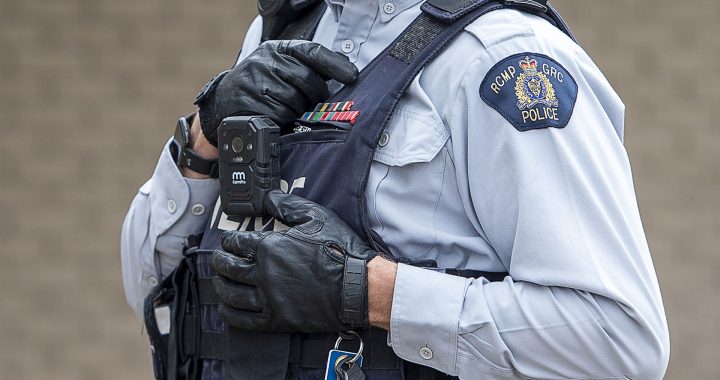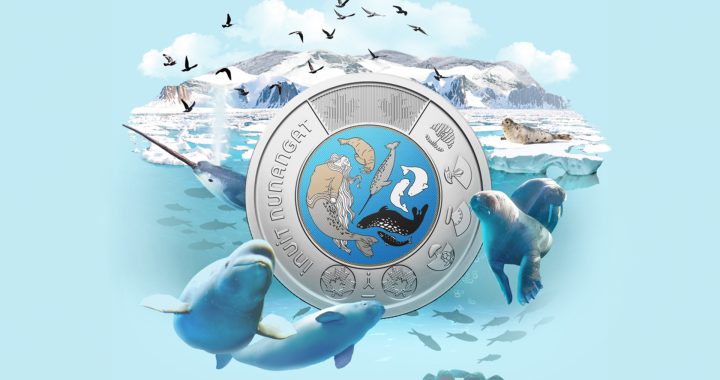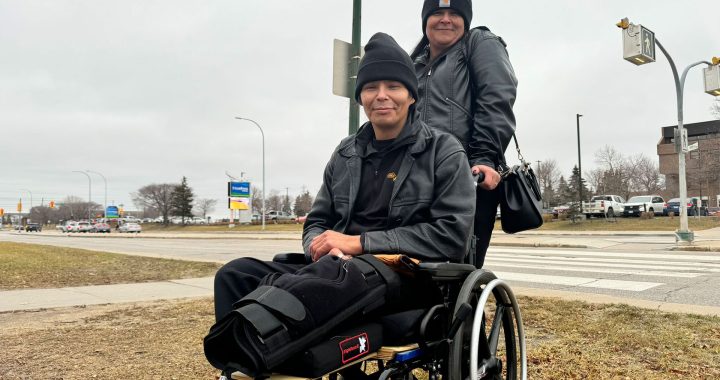
Snuneymuxw and Cree baby with mother on unceded Snuneymuxw homelands. Photo courtesy: Captured Memories Photography.
Birth alerts involve the sharing of an expectant parent’s personal information between social workers and health care workers — without that parent’s consent.
But how exactly do birth alerts work? And why is it that Indigenous parents are subjected to these alerts at a far higher rate than non-Indigenous parents?
Birth alerts were found to be “illegal” and “unconstitutional” by B.C.’s Ministry of the Attorney General, according to government records obtained by IndigiNews. And while some Canadian jurisdictions — including B.C. — have put a stop to these alerts, social workers are still issuing birth alerts in Newfoundland and Labrador, Nova Scotia, New Brunswick and Quebec.
IndigiNews asked Billie Allan, an assistant professor in the school of social work at the University of Victoria, to clarify exactly how birth alerts work, who issues them and why.
Allan is Anishinaabe and their’s research focuses on anti-Indigenous racism in the health care system, including how Indigenous racism in child welfare impacts the health and well-being of Indigenous children, youth, families and communities. Their research has touched on the impacts of birth alerts on life givers. Allan uses the term ‘life giver’ because not all people who give birth identify as women.
The following conversation has been edited for length and clarity.
Anna McKenzie: In your own words, can you explain to me what a birth alert is?
Billie Allan: In Canada, an unborn child or a baby being carried in utero doesn’t have legal personhood, so it’s not legal. There’s not a mechanism for child welfare to open files on a baby that’s not yet been born. And so, the birth alert functions to create a flag in healthcare systems in places where a life giver might be giving birth that a child welfare organization has a concern about that baby’s well-being and about the life giver’s capacity to take care of them.
It might be that someone from community has called in to report a concern about the life giver or their family, or it might be that a health care provider has called in to report a concern. One of the typical ways that this might happen is if someone has been delayed in accessing prenatal care. That can happen for pretty understandable reasons, like, a fear of facing racism in prenatal care might keep people from accessing that care until later in their pregnancy. There can be a perception that they are not really attending to the needs of their baby because they haven’t accessed care.
The Society of Obstetricians and Gynecologists of Canada put out practice guidelines for practitioners working with Indigenous women, and they said that it would be important for clinicians to know that Indigenous women might choose to terminate a pregnancy rather than carry to term for fear that their baby will be taken by child welfare.
That was really meant to make clinicians aware of how serious that fear and terror related to child welfare is and how much it impacts our reproductive health choices. I think that there’s such a gap in the system in understanding that terrorism that happens for our families, the fear around pregnancy or around accessing care for our little ones, or for our own health, especially around things like mental health, and there’s a fear that accessing care will result in the rupture of your family.
A birth alert has an impact not just in that moment, but for generations. So. I think to me, a birth alert, it’s like a pre-emptive triggering of that system into the life of a family.
AM: In your life, when was the first time that you heard about birth alerts?
BA: I would have been working in the city of Toronto and I had the opportunity to receive midwifery care through an Indigenous midwifery practice with Seven Generations Midwives of Toronto, and to really learn about all of the ways that they were supporting families through pregnancy and birthing, and supporting life givers who may be targeted by child welfare because of their own experiences of being in child welfare as little ones, or because of the policing and the criminalization of poverty around what’s perceived as adequate housing or adequate living conditions.
I think the formal term is maybe something newer but, I think our families over generations have had this knowledge of the threat of child welfare, and we might not have had a name for that practice, but you know its present. You might even think of the connection between birth alerts and forced sterilization, like this kind of ambient knowledge we have about the threat of removal of our babies, or even our opportunity to have babies, that’s been happening for generations and continues to happen now.
AM: To your knowledge, is it the social worker who issues a birth alert?
BA: From my knowledge as a social worker, and I have to say I’ve been here in B.C — this is only the start of my fifth year here, but that would come from a child welfare agency. I would imagine that often requires sign off by not just an individual worker, but often their service manager or supervisor.
AM: So a birth alert would be issued by a child welfare organization, and it wouldn’t be issued by a hospital staff?
BA: No. A birth alert notifies hospital staff that there is a concern.
I think the role of health care providers that’s often conflated in that situation is that they may call child welfare services when they see Indigenous life givers present at the hospital. They may have valid concerns about the safety and well-being of a little one or of the life giver, but also there’s often an overlay of racist assumptions about Indigenous parents, about Indigenous Peoples and our health care decisions or health practices or our well-being, or how we present or how we communicate.
AM: You’ve spoken to this a little bit already, but in what kind of circumstance would a child welfare agent issue a birth alert?
BA: Sometimes it might be related to things like poverty and housing, so if someone’s living on the streets or has less access to stable housing. I think there’s a lot of use of the practice of birth alerts around life givers who are using substances or perceived to be using substances.
I think particularly here in the west, we’ve heard a lot of stories from families or life givers who had a birth alert issued because they themselves were involved in child welfare. Somehow, there’s a carryover perception. Imagine that the state has taken you from your family and the state has been your parent, and then for that reason, you’re seen as being at risk of not being a very good parent. I think that has a lot more to say about the state as a parent, but we have seen this kind of justification of someone’s own history of being in the care of child welfare as grounds for concern about their parenting potential.
Where life givers have had previous children taken at birth, or shortly after birth, there’s often a pattern of child welfare following them at every birth. Sometimes that’s related to chronic challenges and issues of poverty, or maybe trauma in the life giver’s life, but I think also there’s a legacy of racism that has not been dealt with. If I’ve had a difficult time at one point in my life in relation to my perceived capacity to parent that doesn’t mean that that’s the story of how I’m going to be as a parent my whole life.
The tricky part about birth alerts is that most child welfare agencies across the country didn’t have birth alert policies on paper because they aren’t legal. There’s no legal grounds for them. It was kind of a policy in practice, so concerns, in terms of apprehending a baby, can vary by the kind of approach or mandate of the organization, and ultimately can come down to individual workers and supervisors and their perception of that risk.
AM: Are you aware of any supports that are offered to the life giver if and when a baby is apprehended?
BA: I’m not aware of any that are offered. I think it’s community supports that often step up to support life givers. I think here on Vancouver Island, for example, there’s the Red Willow Womyn’s Society that’s located in Cowichan Territories. They have done a lot of grassroots advocacy to support life givers in fighting against birth alerts and to resist the removal of children, and then to support life givers in trying to keep their babies or to get their babies back.
I’m not aware of MCFD or other child welfare organizations across the country that offer support. My colleague Ellen Blais, who is an Indigenous midwife and midwifery leader in Ontario, would give examples like: imagine that you are a mom who’s just had a C-section and your baby’s removed at birth, and then days later you’re expected to show up in court, and your body is still going through this process, a disconnected process, but there is a simultaneous process that the baby and your body go through in the recovery process, and here you have to show up in this state where you’ve been separated from your little one, where you’re healing from a traumatic surgery, and then be able to speak to why you should have your baby back. So where I’ve seen the support is from community-based organizations and community advocates.
AM: What do you understand about the transition in B.C to a voluntary support model?
BA: I can reference from my knowledge of what’s happening in a different context. In Ontario, there has been that leadership by Indigenous midwives to encourage and support families to proactively call or engage with child welfare to figure out what the concerns are and to actively address them. So basically, if the concerns are about housing, substance use or safety, the midwives will work together with that family and the child welfare worker to actively address the concerns that might result in a birth alert.
I think a shift to voluntary services would be about engaging to address the concerns before birth. But you have to really think about what’s “voluntary” about engaging with a child welfare organization? If at the end of the day you can take my baby, how is my choice actually free and voluntary?
I think the use of the term “voluntary” in child welfare has been kind of questionable. It’s like voluntary care agreements, where parents aren’t actually told that they can withdraw that consent to voluntary care agreements, where it’s kind of enforced or presented to them. And so they have to continue to engage with it. I think in its ideal form, it’s about actually shifting from a risk and removal focus to a support and family preservation model.
It’s very frustrating to live in a system where you know there’s more financial support and more energy towards supporting other people to foster our children and to raise our children as opposed to resourcing our families to have our needs met to be well and supported to raise our babies. I feel like there’s a lot of mistrust, legacies of mistrust that have to be addressed for life givers and their families to feel like voluntary services are actually voluntary. That’s hard when the power relations are so uneven.
This is part of a series about the legality of #BirthAlerts and the implications for families. If you have a story to share about your own lived experience, email [email protected].










